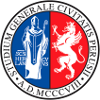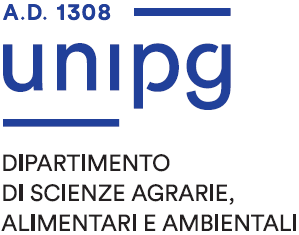DESCRIPTION OF THE RESEARCH ACTIVITY
Research activities concern multiple aspects of agricultural and forestry hydraulics. The main issues are the following:
- Modelling water resource management: development of models aimed at correctly addressing the problem of sustainable exploitation and flexible and integrated management of both surface and underground water resources in a context of multiple uses, including irrigation and environmental uses.
- Modelling of drought phenomena: development of innovative techniques aimed at a pro-active approach to real-time management of agricultural drought. Study, estimation, and mapping of the related risks.
- Climate changes and their effects on agri-food systems: current climatic trends of some drought indices, including agricultural ones (evapotranspiration demand, irrigation needs, resource availability). Study, estimation, and mapping of trends, strategies for climate change resiliency.
- Water erosion processes: monitoring, modelling, and estimating rill and interrill soil water erosion processes at the experimental plot and hydrographic basin scales (SERLAB). Analysis of the characteristics of erosive and non-erosive rainfall events and of their temporal dynamics. Mapping of soil erodibility, estimation of erosive processes at basin scales, definition of strategies for soil conservation and sustainable use. Reservoir sedimentation, and, consequently, water resource availability dynamics. Planning of extraordinary maintenance actions to restore availability.
- Acquisition and interpretation of remote sensing data (satellite and UAV) and their application in the precision irrigation and in the quantification of erosive processes.
- Quantification of vapor fluxes at the soil plant atmosphere interface and irrigation: monitoring of water exchange processes at the soil plant atmosphere interface via EDDY COVARIANCE station.
LABORATORIES AND EQUIPMENT
SERLAB laboratory experimental station for monitoring erosive processes
Features:
- 12 experimental plots (10 rectangular of Wischmeier type with four replicated experimental schemes of variable area from 176 to 22 m2; 2 square plots of 1 m2 with rainfall simulator). Slope of 16%, hydraulically delimited, with interception and accumulation system of the runoff, loamy-clayey soil.
- complete meteorological station
- echosounder
- TDR and hydrometers
- automatic runoff sampler
Measures:
- solid and liquid runoff at erosive event scale.
- climatic data (recording time interval 5 min)
- bathymetry (reservoir that closes the basin where SERLAB falls)
- soil water content and runoff
- photogrammetric surveys of soil surface characteristics
Micrometeorological station
Features:
-One four-component net radiometer, one soil heat flow sensor, one soil temperature sensor (TCAV), one CO2 and H2O gas analyzer, one three-dimensional sonic anemometer, one EnviroSmart probe.
Measures:
- CO2 and H2O fluxes at the soil-plant-atmosphere interface
- components of the energy balance
Research team: Prof. This email address is being protected from spambots. You need JavaScript enabled to view it. (Coordinator) \Scholar \Scopus
Dr. Lorenzo Vergni \Scholar \Scopus
Dr. Alessandra Vinci \Scholar \Scopus
Coordinator: This email address is being protected from spambots. You need JavaScript enabled to view it.
Technical and Administrative staff
Giuseppe Maria Gatti

